This is Part 3 of a 3-Part series exploring modern wildfires, their effects on wildlife, and management solutions underway by Bird Conservancy of the Rockies and our partners. Check out Part 1 and Part 2 as well. This post recently appeared in the Primary Source newsletter.
Flourishing Forests
Fire is a fact of life in the American West, of that you can be sure. Our forests have long been shaped by fire, and efforts to prevent it have significantly changed forests and often backfired —making wildfires worse. Today, we are correcting course by using a process called forest restoration which uses land management tools to transition forests back to near historic conditions to make forests more resilient to natural disturbances, such as fire, while also providing benefits to people and wildlife.
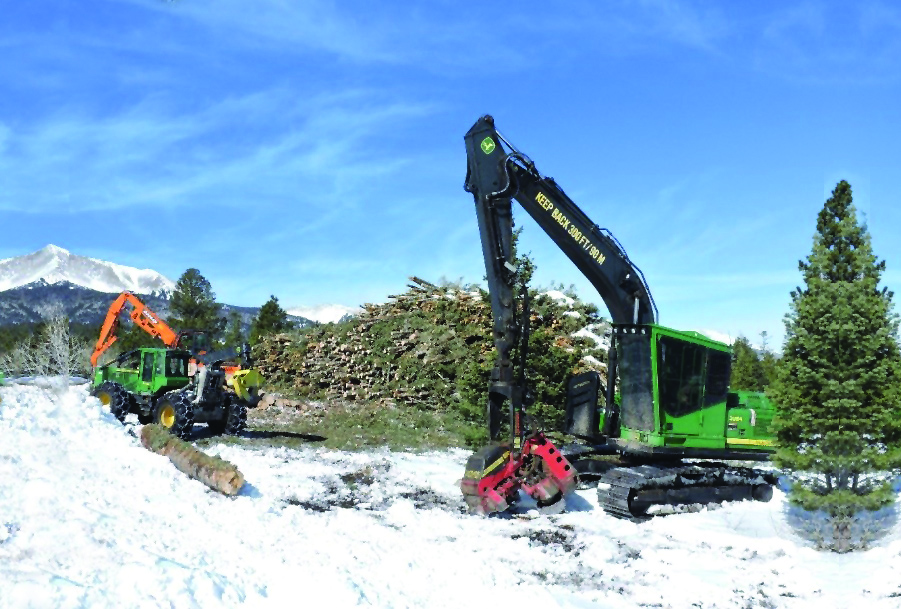
Forest restoration often involves removing trees mechanically with heavy machinery. Material removed from restoration projects becomes lumber, firewood, mulch and more. Photo: T. Woodward.
Tools for Forest Management
Forest restoration targets uniformly dense forests with the objective of diversifying forest structure by removing excess trees. This removes potential fuel that can lead to an out-of-control, “mega” wildfire. In more remote areas, intentional fires – either letting wildfires burn or using prescribed fire – can be an effective way to achieve objectives. In areas closer to human development, such as where our Private Lands Wildlife Biologists work in the southern end of Colorado’s Front Range, it is safer to mechanically remove trees. The resulting forest structure enhances wildlife habitat and increases biodiversity by restoring the mosaic quality of the forest, with vegetation of various age, size, species, and distribution. In fact, species dependent on periodic disturbance events will benefit from this management. By aiming to restore historical forest structure and reduce vegetative fuel loads, managers are also helping to reduce the severity of wildfires that have become more prevalent across the west.
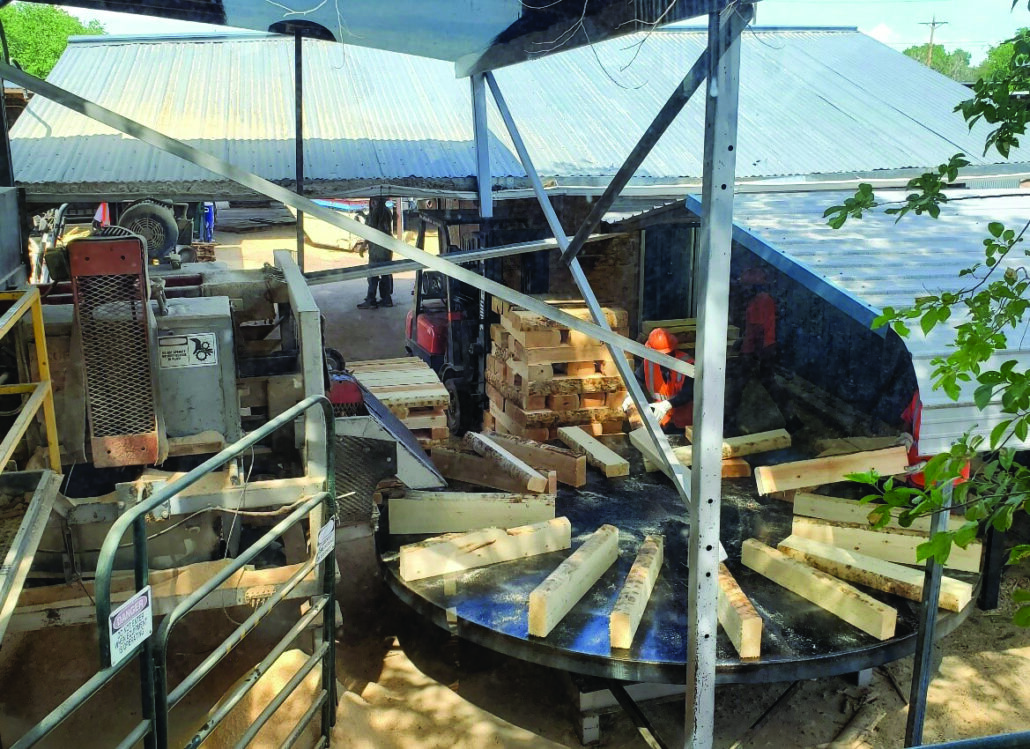
At Pueblo Wood Products, trees from forest restoration projects are used to manufacture pallets, an example of restoration materials being used as a sustainable resource in global commerce. Photo: D. McNitt.
Win-Wins for People and Wildlife
Once trees are thinned, more sunlight and water will hit the ground. In turn, this will improve understory vegetation composition which provides improved forage for large mammals and increased insect availability for many bird species. Even further, the benefits of forest restoration extend far beyond increased biodiversity and enhanced habitat. Property, infrastructure and even human lives all gain protection when wildfire severity is mitigated. Restoring grazed forests can improve lands for livestock, while the trees removed from overly dense forests provide a sustainable and plentiful source of lumber. Forest restoration can even increase water availability and reduce erosion. It’s an ecological and economical win-win, especially on working lands.
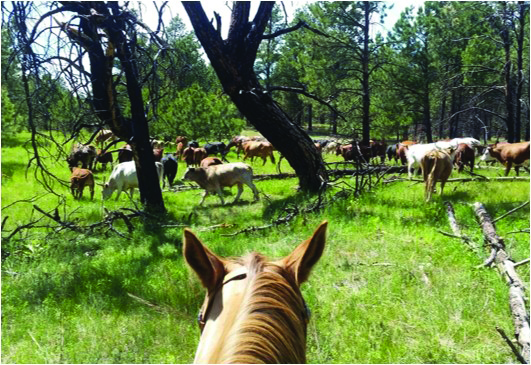
We work with landowners to achieve their goals while folding in wildlife benefits. The rancher enjoying this horseback view also saw improved grazing in his forests soon after restoration work was completed. Photo: D. Lorenz.
Science Guides Action
As revealed in the 2018 “3 Billion Birds Lost” report in the journal Science, western forest species have lost approximately 140 million birds since 1970—an estimated 33% decline. Our forest restoration projects are guided by scientific data on historic forest conditions, wildlife habitat, climate change, fire science, and more. A major plus of these projects is that they’re not species-specific but benefit entire wildlife communities, as supported by a recently published paper from our science team. We will continue to study these relationships to help guide our land stewardship efforts, including prioritizing project locations and monitoring the effects over time following restoration.
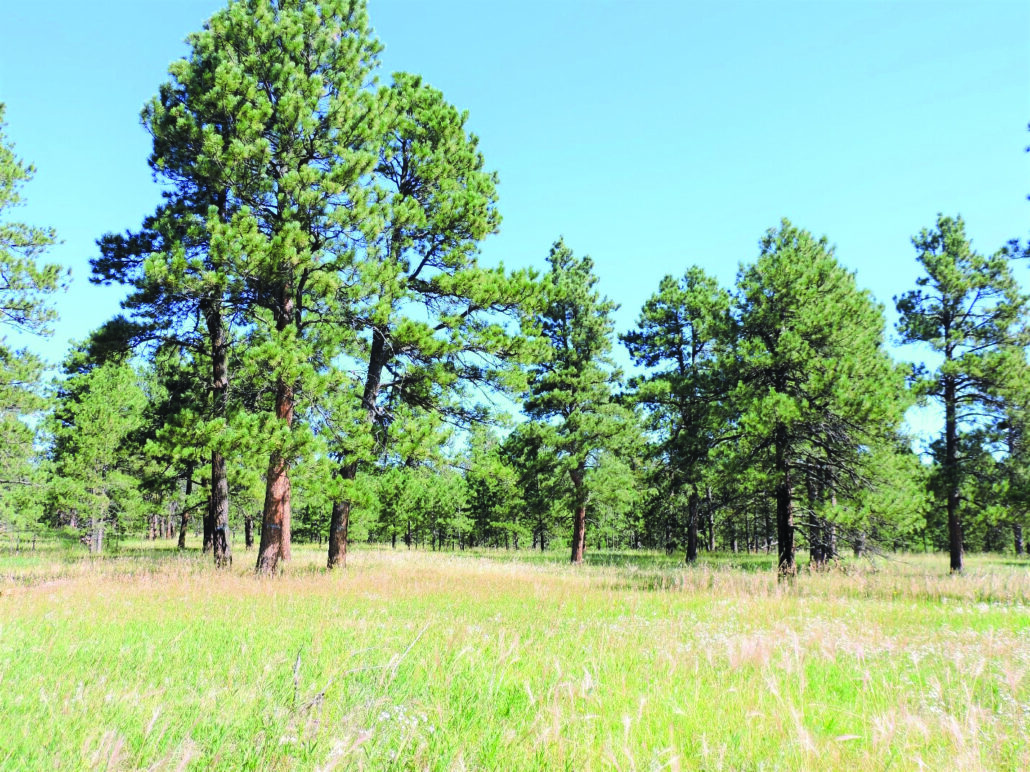
This recently restored ponderosa pine woodland from a meadow. Once the machines leave, nature takes control again quickly – this time on a better path. Photo: T. Woodward.
Restoring Western Forests: A Big Task
Considering the millions of acres of forest in the Western US alone, the task ahead is a big one. Restoring forests at a meaningful scale is intensive and expensive. It typically means big machines, removing many trees, using prescribed fire, and lots of time and money. It can appear to be a messy affair when the process is underway, and can be counter intuitive for many of us nature lovers.
Perhaps the most valuable thing we can do is approach forest restoration with an open mind and challenge our concept of what a forest “should” look like. If we pay close attention to the science, the history, and the wildlife, the path ahead becomes clear. Once the machines leave, return to the same forest a year or two later and let the birds speak for themselves.
In partnership with the Natural Resources Conservation Service, Colorado Parks and Wildlife, local Conservation Districts, and other partners, our Stewardship team helps landowners plan, fund and conduct collaborative restoration projects on their land and across property boundaries.
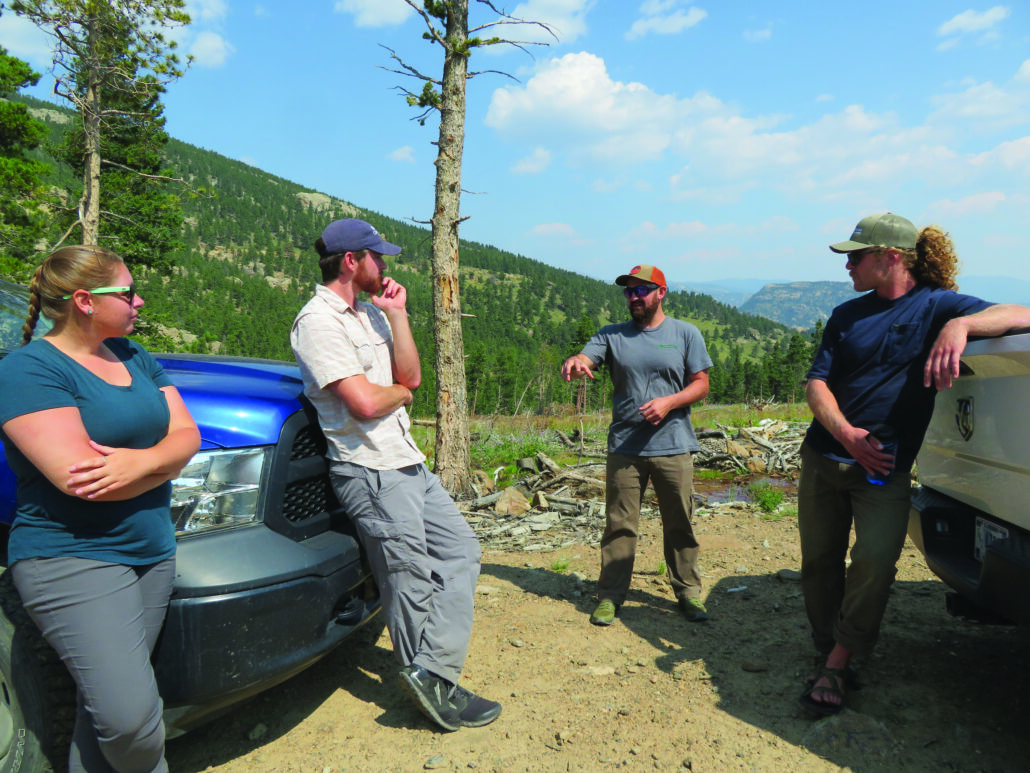
Talking forest restoration in the field, L-R: Kaitlyn Nafziger (BCR), David McNitt (BCR), Matthew Marshall (Big Thompson Conservation District) and Dylan Alsbach (Fort Collins Conservation District).
David McNitt (based in Woodland Park, CO) is employed by Bird Conservancy of the Rockies with funding support from the USDA Natural Resources Conservation Service and Colorado Parks and Wildlife.


